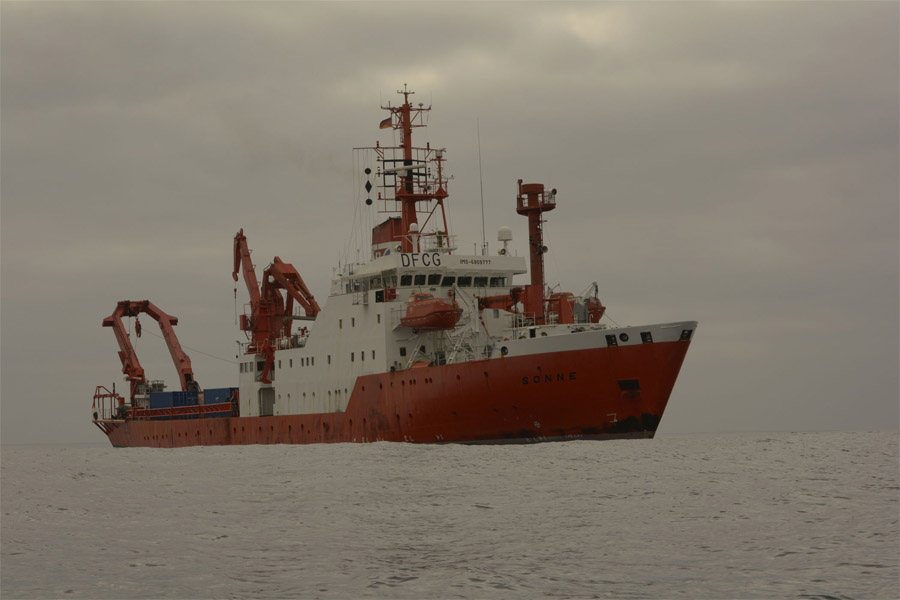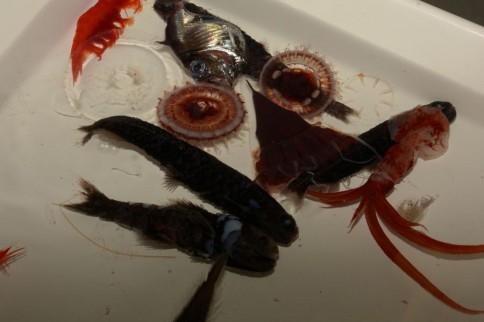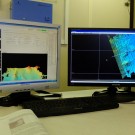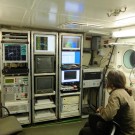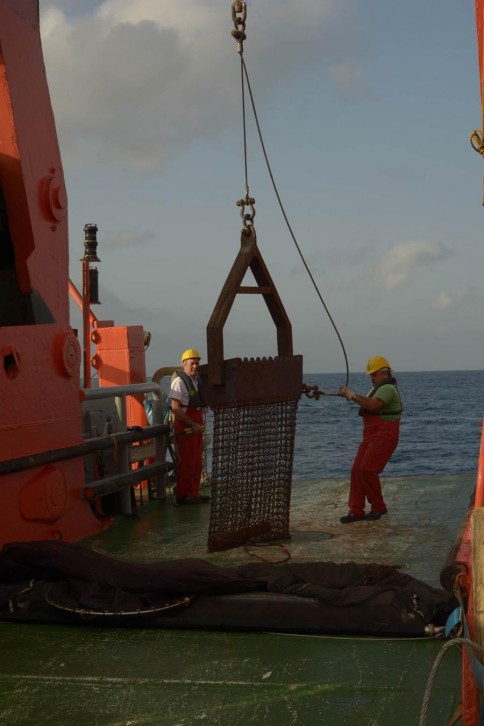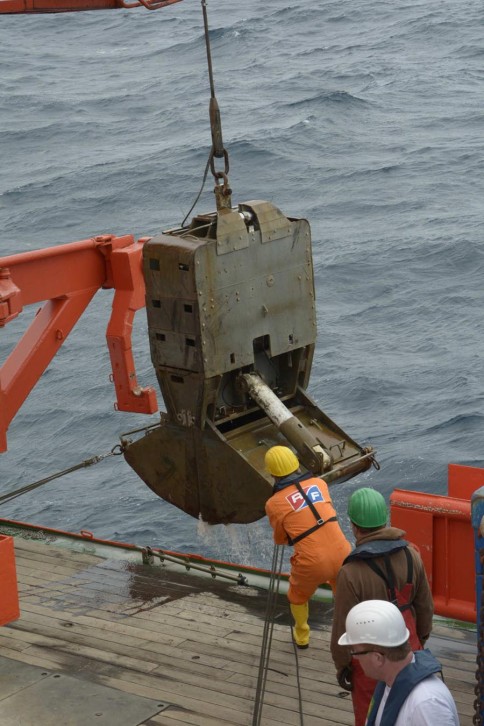By Edison Kapuire
University of Namibia, BSFA Honours Graduated
Winhoek, Namibia
What I have encountered in this expedition has gone beyond one expectation. Something I am grateful for and will always be. A lot has been learnt in this journey in a short period of time, and in one thought and mind is hard to find what is it that one missed which I can point out. Biological and geological sampling, lab work and lecturers has been practiced and presented in well, humors, organized way one possible may think of. All the Individuals on the SO234 cruise were way to Friendly and their hospitality is beyond imaginable that at one instant one thought they were not human but robots designed to assist one quest no matter how busy they were.
On the biological perceptive, Trawling with rectangular mid-water net with a closed cod end was done from 400 m to well about 1000m deep. Personally filled the joy I had in helping Adrian setting up the nets, occasionally. Nets were trawled over less than five hours and with a minimum speed possible as the objective of the biological cruise was to preserve the sample in the best possible stated even if they were few. The best possible technology was utilized in ensuring that the net was kept at the desired depth. Fish identification was carried out and an observation of the fish brain was done to greater details, giving thanks to Ron Douglas and Hans-Joachim Wagner (on the study of fish brain) and to Adrian Flynn (fish identification) and Fanny de Busserolles (The eye of the fish).
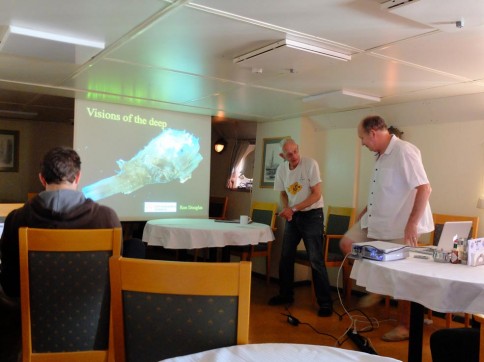
Adaptation of visual systems in mesopelagic animals to bioluminescence was lectured and observed in details on board (SO 234/1). Photo: Edison Kapuire
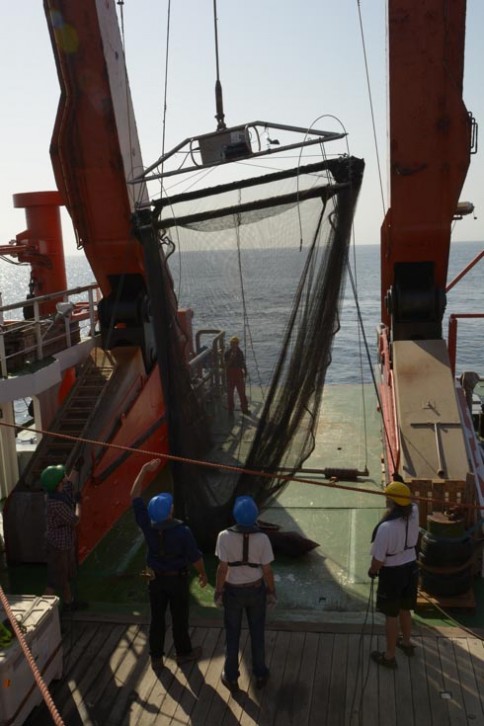
Trawling nets being deployed into the sea for mid-water trawling on Sonne (SO 234/1) Photo: Roland Knauer
On the geological perspective, Jörg Geldmacher (The master who kept our night shift hilarious and enjoyable, that even at 8 am one wished and prayed it was night time already, a practice one would not which for in any other normal night shift) and Reinhard Werner made it possible for us to pick up what they were doing and why they doing it and before one knew it, one was already a geologist that deserved at least a Diploma if not a Master degree to be fair. Atlas Parasound sub-bottom profiling system and the SIMRAD EM120 echo sounding system were put into great use in locating seamounts on the Walvis Ridge in the range of about 2500m to 3500m depth and a designated point on the seamount was than selected for dredging. The reading of the Parasound and EM120 was done in Shift of two hours, individually, over 24 hours.
- EM120 and other software onboard Sonne. Photo: Edison Kapuire
- EM120 and other software onboard Sonne. Photo: Edison Kapuire
At least each dredge brought a rock sample that was than identified into its/their lithology, washed, measured, described, Cut into TS (Thick section) and sample were preserved for Geochemistry. Other rocks of no interested to geologist at the time were preserved in case they might be of great use to other geologists or future geologists. Carbonate rocks were common in our sample, and occasionally we would get sediments which were all (carbonate and sediments) thrown off board back into the deep sea after inspecting weather there where rocks covered inside those cluster.
TV Grab, we got to observe the deep sea surface but unfortunately I didn’t visualize any sea animal on this occasion. Who cares, there will be many more days to come in which we can expand more on what the SO234/1 cruise give us as a basic very strong foundation no one in this world will ever take away from us.
To the students scientists, I personally was happy with the exchange of idea and appreciated the little moments we shared and the willingness, eager and desired that every other student had in helping his fellow colleagues, High five to that. Given more time I trusted and belief we can share more and start to feel more at ease with one another.
To the senior scientists, is the best collection of scientists on a single cruise I have known so far, and for any other combination to beat this guys they must be from a different planet not ours. My Acknowledge to you Mattheus Ulrich, Douglas Ronald, Werner Reinhard, Wagner Hans-Joachim, Fretzdorff Susanne, Geldmacher Jörg, Kipf Andrea, Schroeder Matthias Homrighausen Stephan, our own photographer Knauer Roland and to the crew team and Forgetting GEOMAR as a whole.
Extra activities, this included safety drill sections on the main deck and tours across the vessel in order to familiarize oneself with the objects onboard and exit passage in case of an emergency. A tour to the engine room was done on a separate day and it was as delightful and educative as the other tour. Not to forget the little productive and inspirational talks we had at the dining tables with the experts themselves, in matters relating to life and in academics.
Although the food was very Germanic or German, it was lovely! I will always miss Harry and his team when I will be recalling the lovely taste of the German food and the way he served us, his guest on the cruise.
Goodbye Sonne crew, scientists and students, I will treasure these moments and will carry your name´s on my Shoulders as a symbol of gratitude unto you…..
